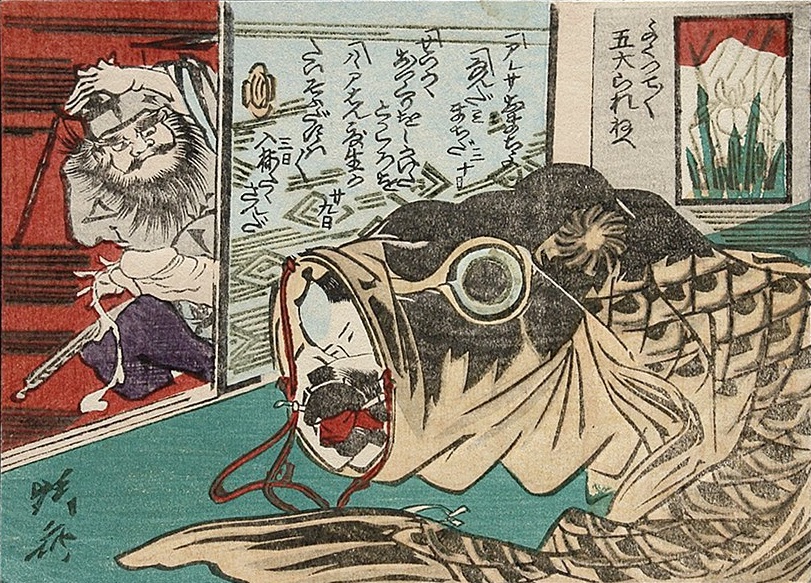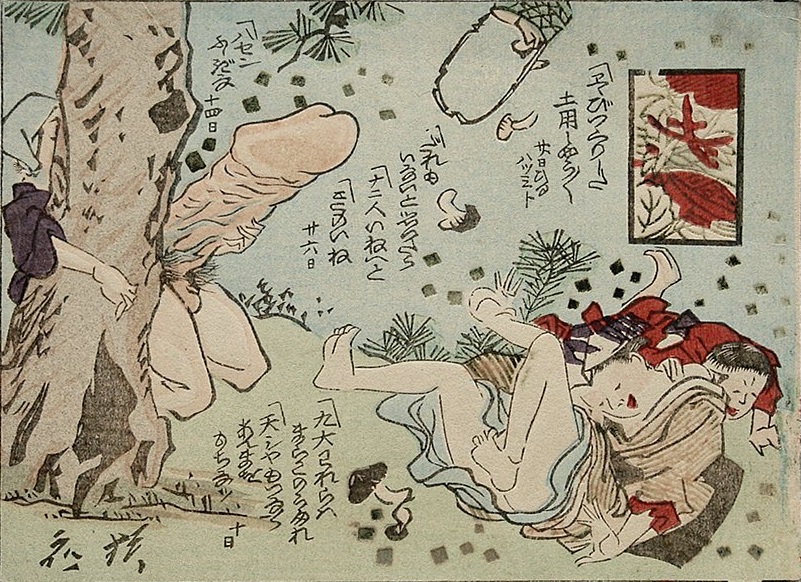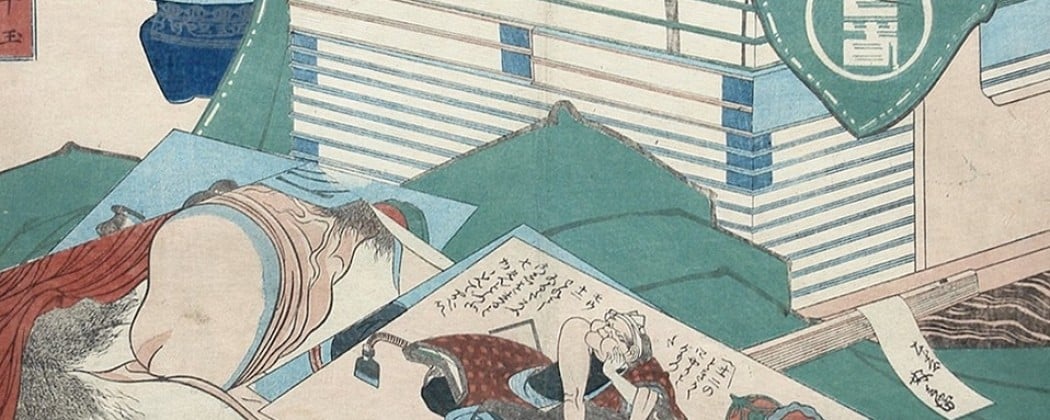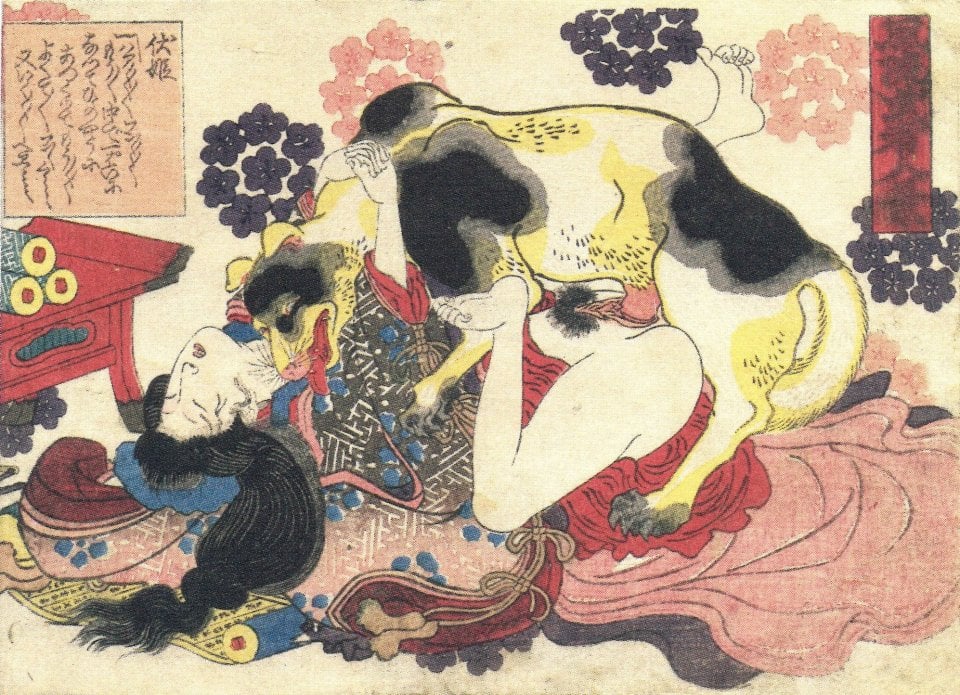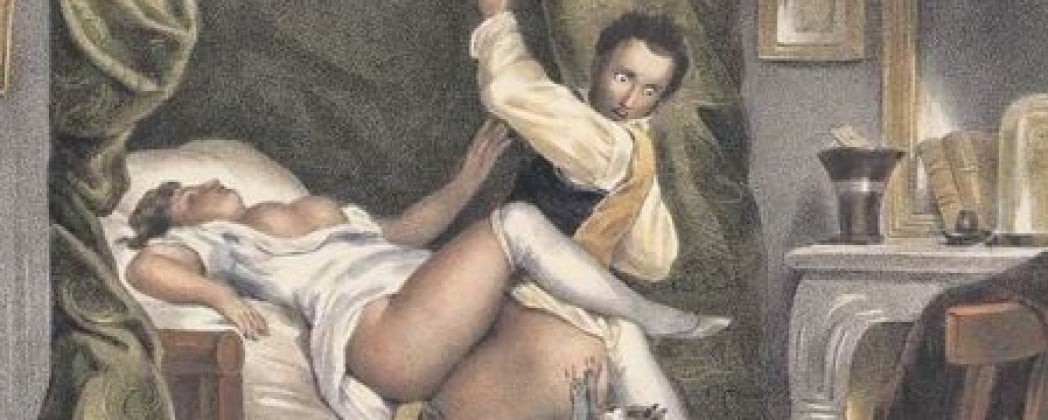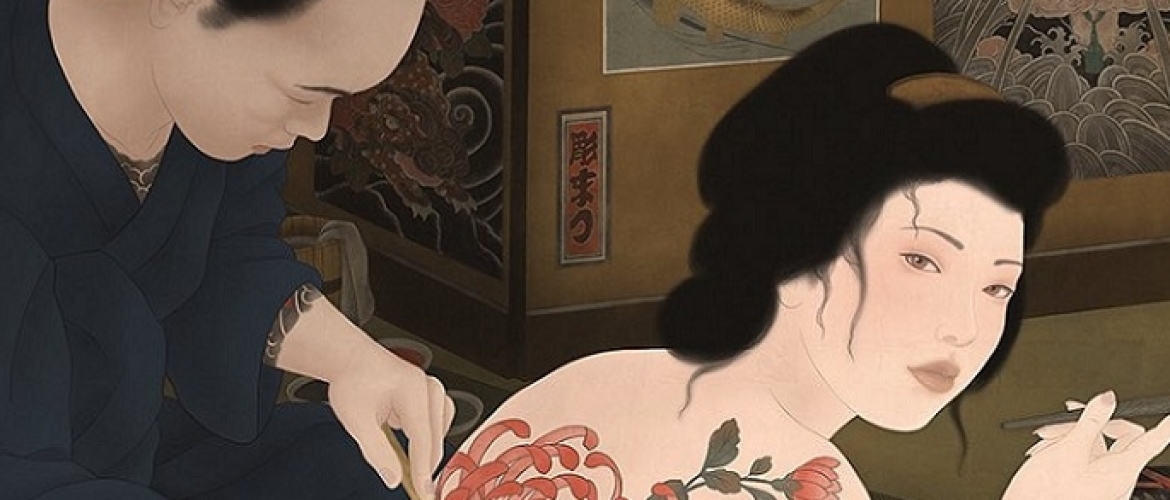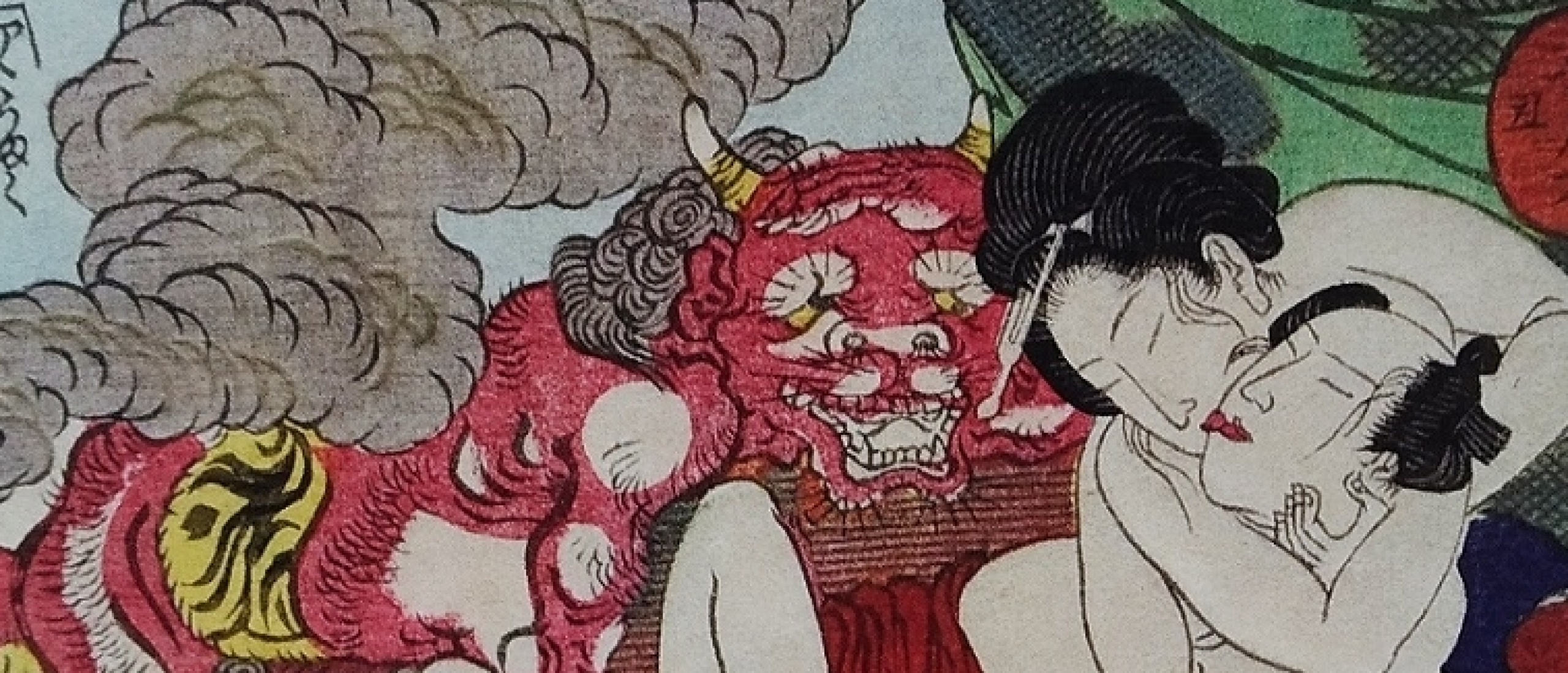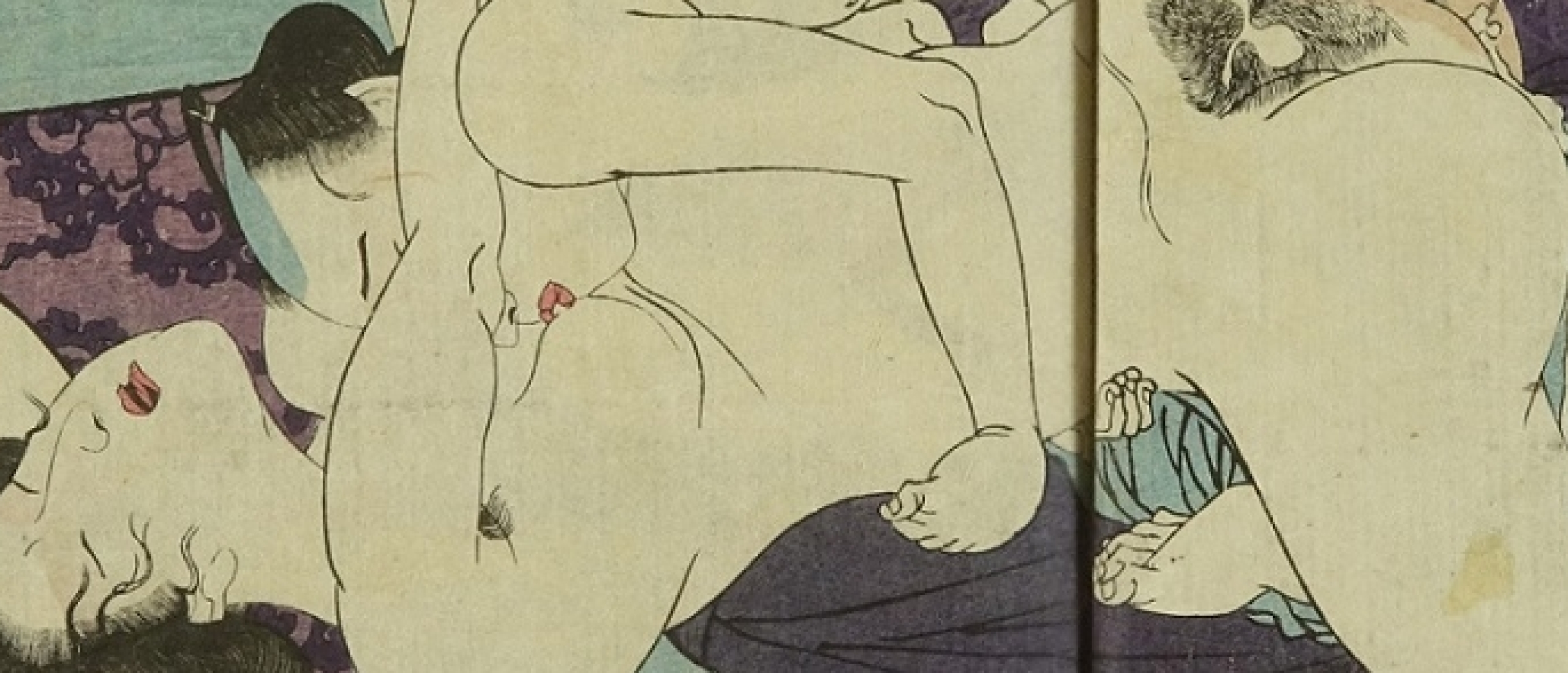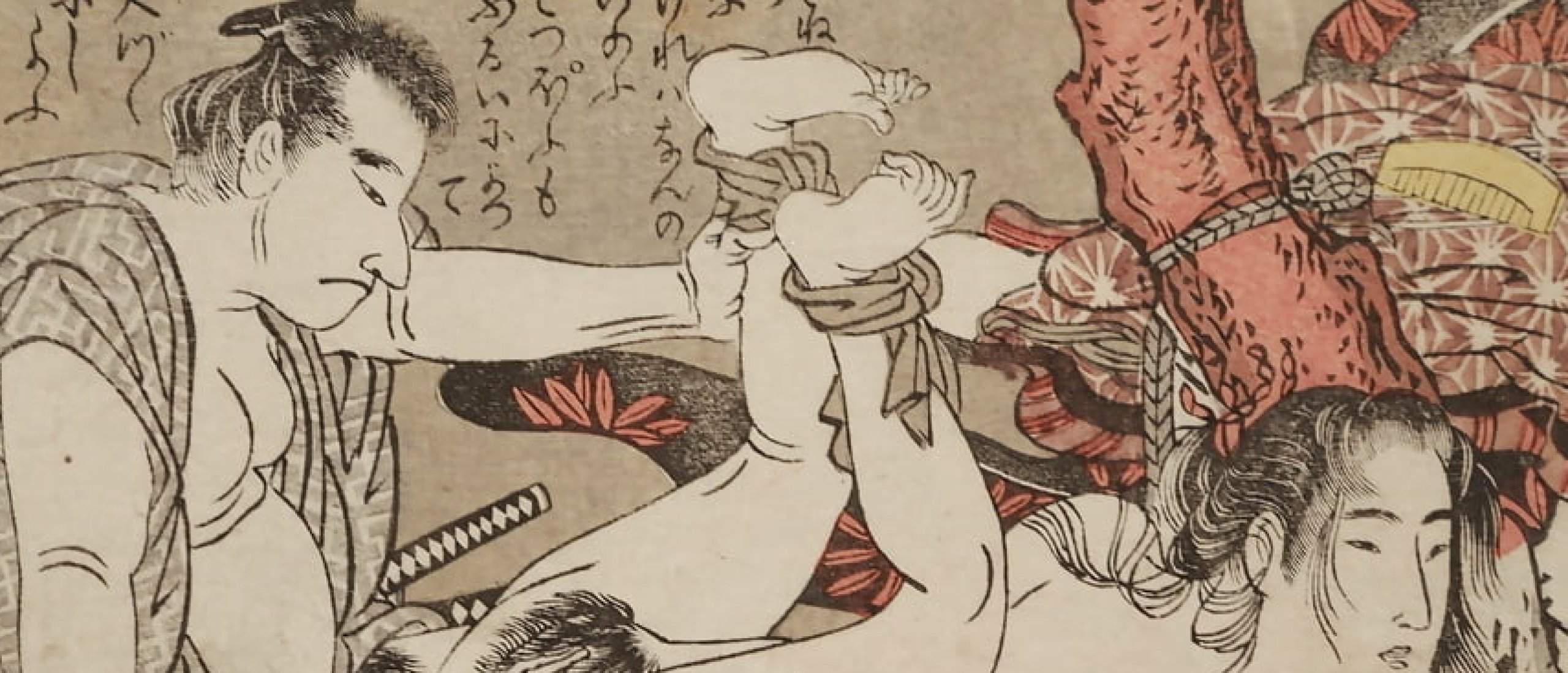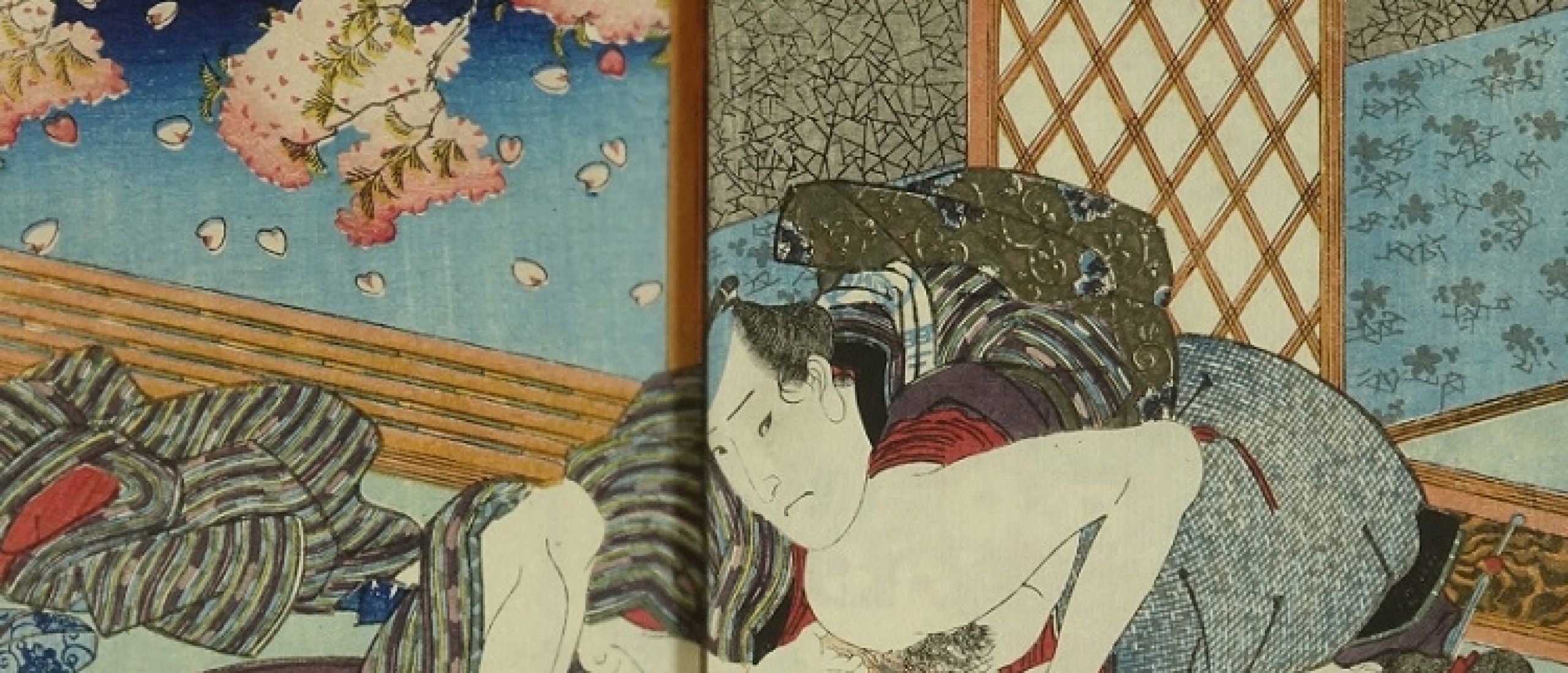
Among the most famous erotic works by the great ukiyo-e artist Utagawa Kuniyoshi (1797-1861) is the hanshibon-sized illustrated book series Hana-goyomi (Flower Calendar), that was issued in 1835.
'Hidden Names'
Due to the new publishing regulations issued as part of the Kyōhō reforms in 1722, the names of authors, artists, and publishers all but disappeared from erotic books. 'Hidden names (ingō) started to be used instead.
'Playful Name'
Real identities were not completely disguised, however, and the hidden names generally alluded in some way to the person's real name or to an additional 'playful name' (gigō) with which they were associated. For example, the artist of the present book generally used the name 'Ichiyusai Kuniyoshi' for his ordinary ukiyo-e prints.
A Wondrous Pussy
For this erotic book, however, this is playfully changed to 'Ichimyōkai Hodoyoshi' ('A Wondrous Pussy, How Nice'). Another easily recognized hidden name used by the artist was 'Neko-Yoshi' ('Cats are Good'), as Kuniyoshi was a well-known and self-professed cat-lover.
Bewitching Beauty
The overall quality of Hana-goyomi was enough to take the reader's breath away. It was colored in gold and silver, and incorporated artistic use of gaufrage (karazuri), skilled carving and printing techniques, and amazingly skillful depictions of the bewitching beauty of the female subjects. The nuanced shading and gradations of both the indigo blue and the sumi black are impressive and beautiful throughout.
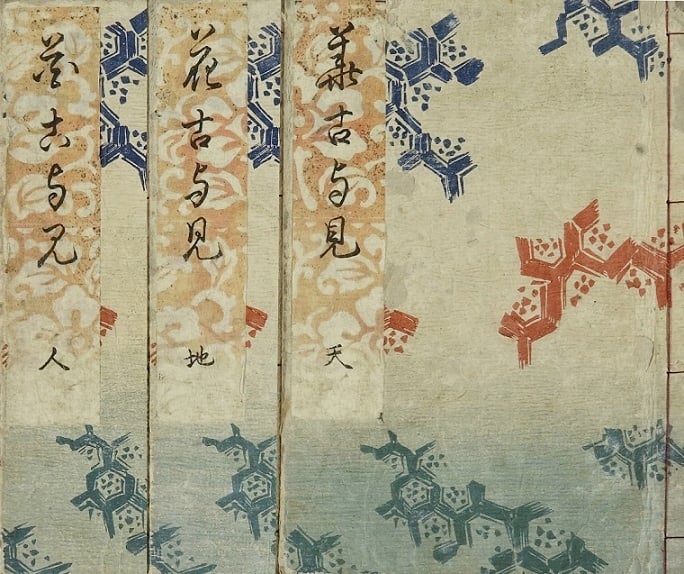
Fig.1.
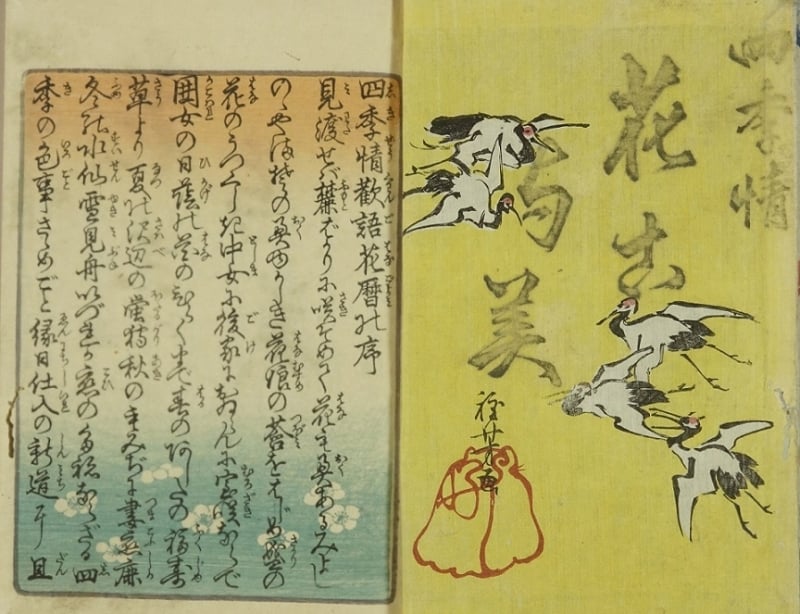
Fig.2.
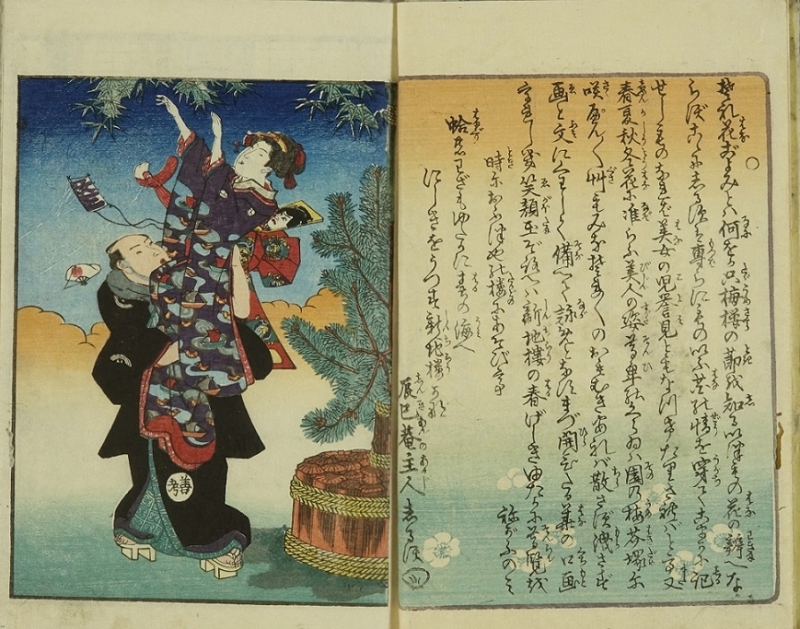
Fig.3.
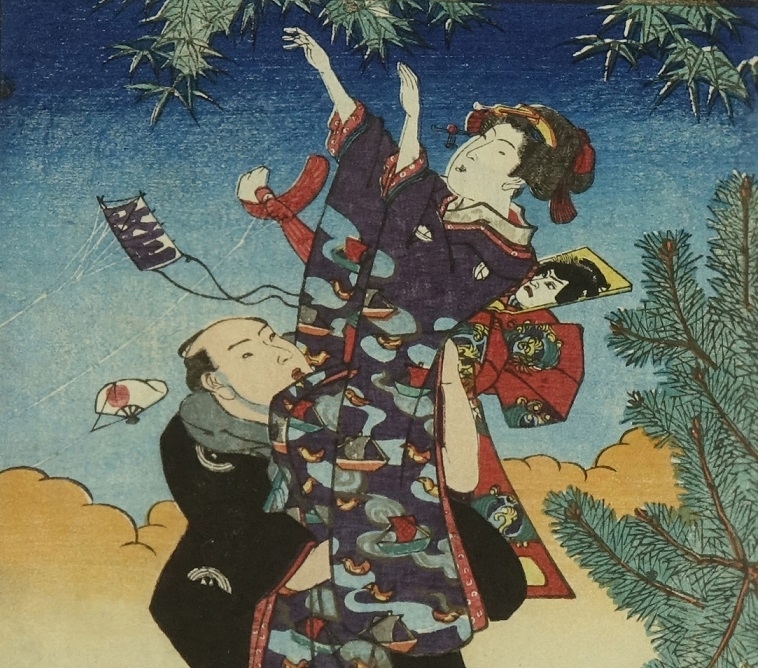
Fig.3a.
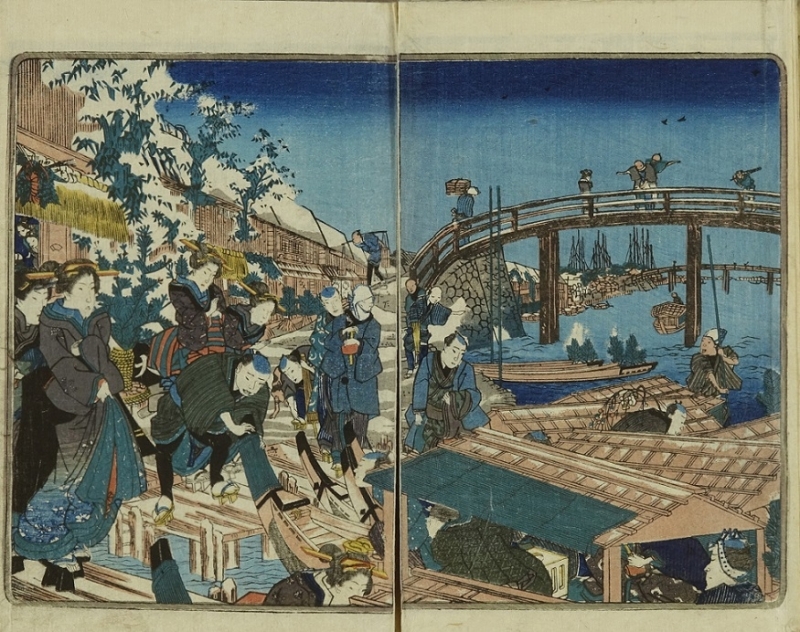
Fig.4..

Fig.4a.


